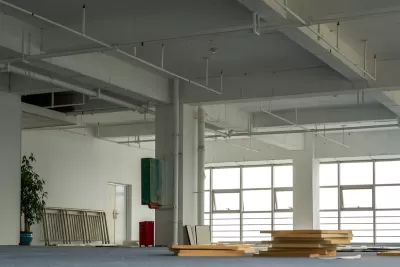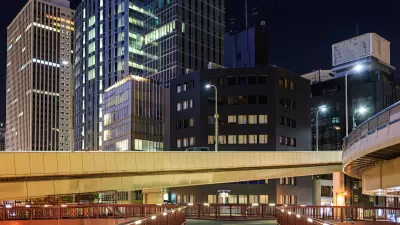Adaptive reuse projects are continuing to bring thousands of new housing units onto the market as demand for office space remains low.

Office-to-residential conversion continues its growth, with 70,700 new apartments in the pipeline for 2025. The trend is part of the shift of central business districts and commercial areas to other uses, including residential, that has characterized the post-pandemic reorganization of cities. As Florin Petrut reports for RentCafe, “Office conversions now make up almost 42% of the nearly 169,000 apartments in future adaptive reuse projects.”
The report notes that more than 51,000 units under construction are carryovers from 2024, indicating a somewhat slow pace as construction costs, supply chain issues, and other challenges come into play. “A notable shift is indicated by the increase in adaptive reuse projects involving newer buildings constructed between the 1990s and 2010s. While only 1.27% of completed projects utilized these newer buildings, the figure jumps to 7.03% for future projects,” indicating a preference for newer buildings that are more adaptable and likely to meet modern building standards.
See the source article for a breakdown of the top 10 cities for adaptive reuse, with New York City taking the top spot with 8,310, or 53 percent of office-to-apartment conversions.
FULL STORY: Record-Breaking 71K Apartments Set to Emerge From Office Conversions

Study: Maui’s Plan to Convert Vacation Rentals to Long-Term Housing Could Cause Nearly $1 Billion Economic Loss
The plan would reduce visitor accommodation by 25,% resulting in 1,900 jobs lost.

North Texas Transit Leaders Tout Benefits of TOD for Growing Region
At a summit focused on transit-oriented development, policymakers discussed how North Texas’ expanded light rail system can serve as a tool for economic growth.

Why Should We Subsidize Public Transportation?
Many public transit agencies face financial stress due to rising costs, declining fare revenue, and declining subsidies. Transit advocates must provide a strong business case for increasing public transit funding.

How to Make US Trains Faster
Changes to boarding platforms and a switch to electric trains could improve U.S. passenger rail service without the added cost of high-speed rail.

Columbia’s Revitalized ‘Loop’ Is a Hub for Local Entrepreneurs
A focus on small businesses is helping a commercial corridor in Columbia, Missouri thrive.

Invasive Insect Threatens Minnesota’s Ash Forests
The Emerald Ash Borer is a rapidly spreading invasive pest threatening Minnesota’s ash trees, and homeowners are encouraged to plant diverse replacement species, avoid moving ash firewood, and monitor for signs of infestation.
Urban Design for Planners 1: Software Tools
This six-course series explores essential urban design concepts using open source software and equips planners with the tools they need to participate fully in the urban design process.
Planning for Universal Design
Learn the tools for implementing Universal Design in planning regulations.
City of Santa Clarita
Ascent Environmental
Institute for Housing and Urban Development Studies (IHS)
City of Grandview
Harvard GSD Executive Education
Toledo-Lucas County Plan Commissions
Salt Lake City
NYU Wagner Graduate School of Public Service





























